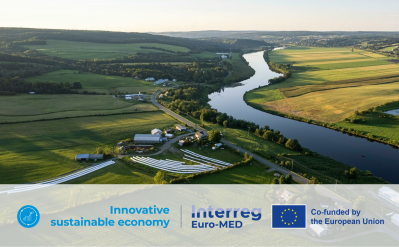Since 2019, ACR+ has been running the More Circularity, Less Carbon campaign, aiming to support several cities and regions among ACR+ members to assess the carbon footprint of municipal waste and determine priorities to reduce the associated carbon emissions. For that, ACR+ partnered with its member Zero Waste Scotland to use a tool going beyond weight-based waste measurement: the Carbon Metrics International (CMI). The CMI helps decision-makers to understand how prevention waste measures can contribute to reducing CO2 emissions.
Seven ACR+ Members participated in the campaign and analysed the carbon footprint of their municipal waste: the Pays de la Loire Region, the City of Genoa, the Brussels Capital Region, the City of Odense, Ireland, the Province of Navarra, and the City of Belfast. Overall, the carbon footprints of municipal waste present strong similarities in all territories, allowing to draw some preliminary conclusions. In particular, the embodied impact of waste is much more significant than the emissions linked with waste collection, treatment, and recovery.
The webinar explored the critical link between municipal waste and climate change mitigation, presenting findings from the "More Circularity, Less Carbon" campaign.It highlighted that cities and regions are crucial players to reduce the carbon footprint of several key sectors by implementing ambitious yet feasible actions to prevent losses and waste, extend the lifetime of products, and close the loops of materials.
|
The webinar started with a presentation of the campaign, coordinated by ACR+ and supported by ACR+ Member Zero Waste Scotland, and how it helped seven European territories calculate and analyze the carbon footprint of their municipal waste. Results revealed that three waste streams—food, textiles, and plastics—account for the majority of emissions, largely due to embodied carbon in discarded products. While waste management practices like recycling can offset some emissions, the study found they fall far short of the reductions needed.
“Even with best-case recycling on critical fractions, we’re only cutting emissions by 10%,” said Jean-Benoît Bel, ACR+. “To reach the 25% carbon reduction target by 2025, we need bold prevention and reuse strategies.”
Experts from Zero Waste Scotland, the Irish Southern Waste Region, Rreuse, and Zero Waste Europe echoed this message, urging policymakers to shift focus upstream. Presenting Zero Waste Scotland’s tool the Carbon Metric International, Donald Chapman, demonstrated how embodied emissions from production far outweigh those from waste treatment, emphasizing the need for lifecycle-based assessments. Philippa King, representing Ireland’s national waste planning team, shared how insights from the campaign influenced Ireland’s latest waste plan, which now integrates circularity and climate targets. “Our goal is zero percent waste growth per capita by 2030—and we’re aligning every policy lever toward that,” she said.
Panelists then called on the EU to introduce legally binding reuse and prevention targets, stressing that current policies overly emphasize recycling. They also mentioned that targets were not necessarily sufficient, and should be combined with enabling frameworks, consistent economic measures not only to create adequate market conditions to prioritize sustainable options but also to guarantee full cost-coverage and ensure sufficient funding (through EPR schemes in particular). Manon Jourdan from Zero Waste Europe highlighted the role of local governments in banning single-use items, incentivizing reuse, and rethinking public procurement. “If we want to decarbonize, we must stop treating waste as the end of the line,” concluded Marie-Jeanne Gaertner of RREUSE. “Waste prevention must be a climate priority.”
|
- Waste prevention and reuse are essential to cutting emissions.
- Recycling alone cannot meet a 25% emissions reduction target by 2025.
- Local governments can lead through planning, procurement, and public engagement.
- Binding EU targets and better data collection are needed to scale action.
|
|






